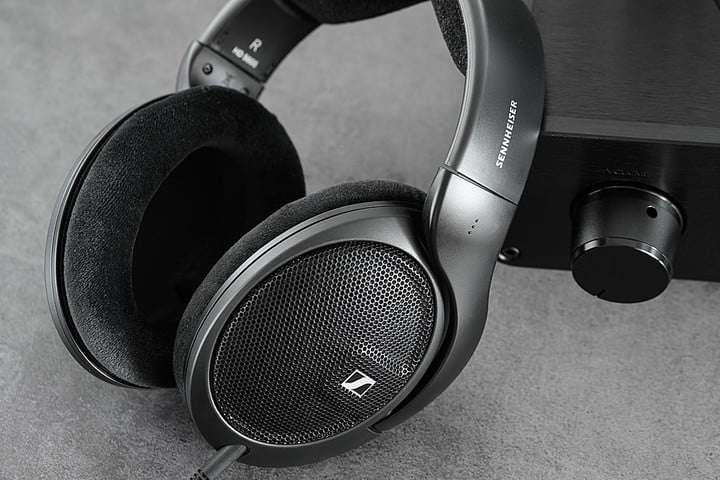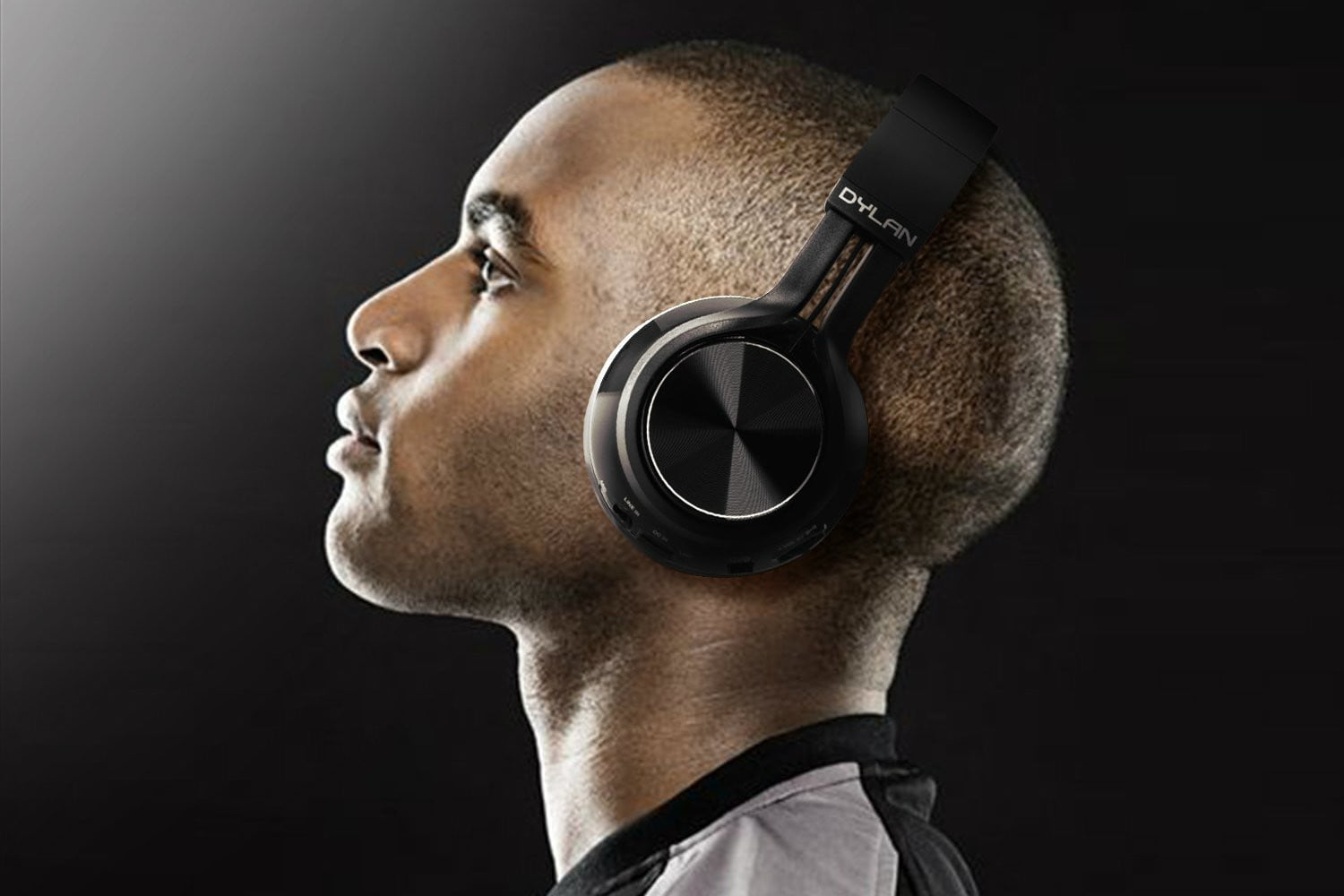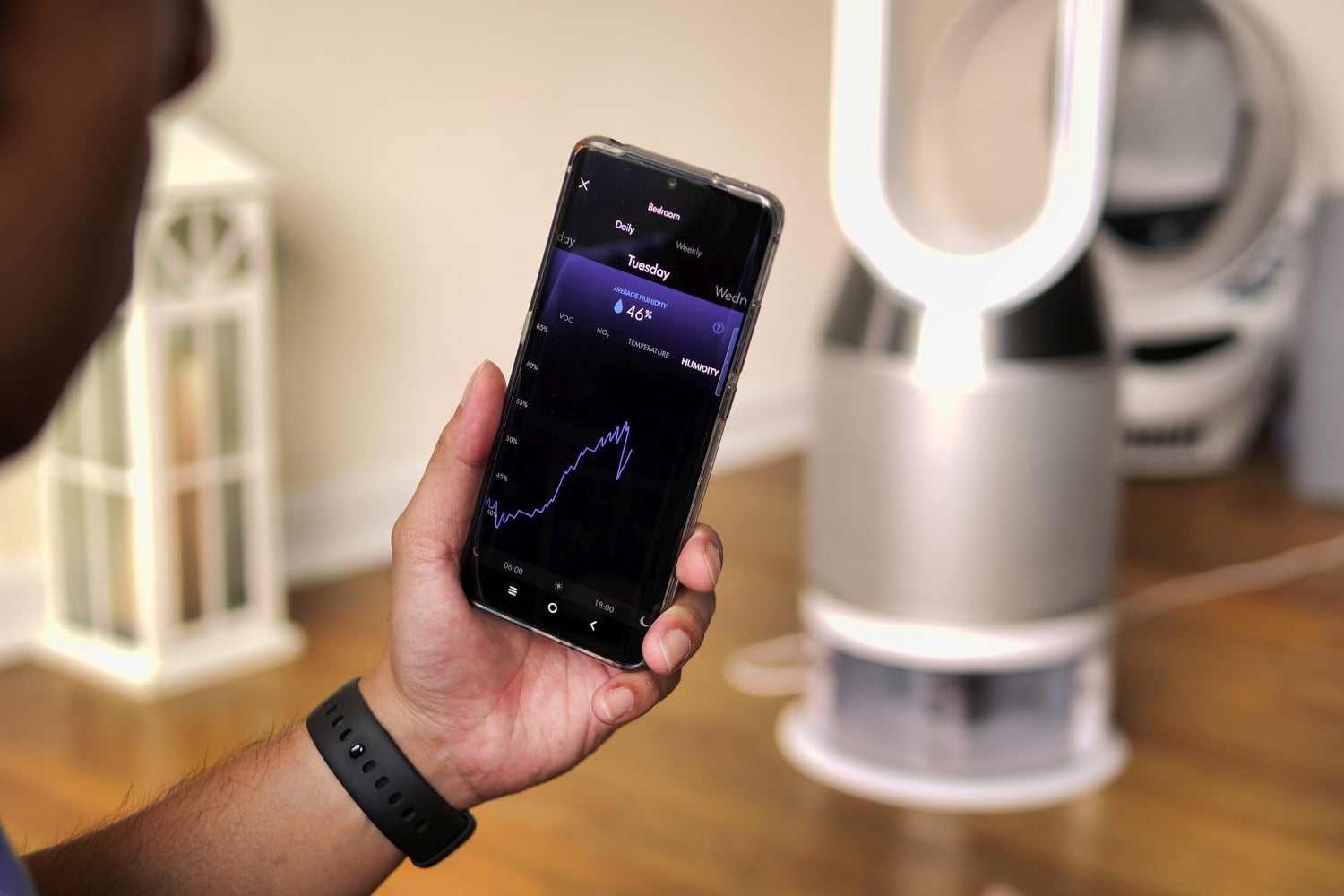High-resolution audio, hi-res audio, or even HD audio — whatever you decide to call it (for the record, the industry prefers “hi-res audio”), it’s a catch-all term that describes a type of digital audio that goes well beyond your garden-variety MP3 file. With several music-streaming services like Deezer, Tidal, Amazon Music, and Apple Music all touting their hi-res audio options, more people than ever are taking an interest in it.
But what exactly is hi-res audio? What equipment do you need to listen to it? Where can you download or stream it? And does it actually sound better? These are the burning questions for those just hearing about hi-res audio, and we’re here to answer them for you. Here’s everything you need to get up to speed on hi-res audio, in plain English so that you can really wrap your head around higher-quality audio formats.
What does the term “hi-res audio” mean?
Since its introduction, the audio CD has been a benchmark for digital audio quality. “Hi-res audio” is generally used to describe any digital audio file or format that exceeds the quality of an audio CD. The first widely available hi-res formats were Super Audio CD (SACD) and DVD-Audio. They both launched within months of each other in the year 2000. They used proprietary digital files that could only be played back by a limited (and fairly pricey) number of disc-playing devices, and neither developed much of a following outside of die-hard audiophile circles. At the time, the audio industry tended to use terms like HD Audio and High-Resolution Audio interchangeably to describe these formats, which inevitably caused confusion among consumers.
Unfortunately for those first hi-res formats, they were born at exactly the wrong time. By the time they were becoming more widely available — around 2001 — Apple turned the music-listening world upside down when it released the first iPod. Overnight, any growing momentum toward hi-res music was decimated by Apple’s promise of “a thousand songs in your pocket,” and music fans gobbled up iPods at a dizzying pace.
With storage space at a premium, there was no way to include hi-res music files on these portable music players. In fact, the opposite was true: In order to fit that much music, the iPod and other players at the time relied on the MP3 — a “lossy” digital audio format that actually deletes much of the information on an audio CD to keep file sizes as small as possible. Hi-res audio simply couldn’t compete. It would be almost 15 years before portable storage was cheap enough and plentiful enough to house their (relatively) large file sizes.
The rebirth of hi-res
As convenient and popular as iPods and MP3s were, not everyone was happy with what the new digital formats had done to music quality. Folk-rock legend Neil Young was an early and outspoken critic of both the MP3 and its biggest purveyor at the time, Apple’s iTunes. Young’s criticisms eventually led to action and in 2012 he showed off an early prototype of the PonoPlayer, a portable music device capable of playing hi-res audio. In 2014, the PonoPlayer launched on Kickstarter and was very successful — from a crowdfunding point of view — bringing in millions in funding.
The project also spawned an online music store where you could buy and download hi-res music. But despite the early enthusiasm for the idea, neither the player nor the store was ultimately able to grab much more than a small niche audience, and both were shuttered in 2017.
However, Neil Young wasn’t the only one who noticed that iPods and MP3s were failing to satisfy a demand for high-quality digital music. Shortly after Young showed off his prototype, Sony stepped into the hi-res ring. With its massive marketing clout, the Japanese audio giant threw its weight behind hi-res audio, created a black and gold logo to identify products that are compatible with the format, and began slapping it on everything from portable music players to A/V receivers.
Sony handed over control of that logo to the Japanese Audio Society, which has been managing it since 2014. There is now a wide variety of hi-res capable devices on the market from lots of brands both big and small, and these cover the gamut from smartphones to wireless Bluetooth headphones.
How is hi-res different from CD audio?
We said that hi-res audio means “better-than-CD-quality” but how do you improve on CD quality? Before we can answer that, here’s a quick 101 on how the quality of digital music is quantified:
Digital music sound quality is commonly expressed by using two values: bit depth and sampling rate. These are the two variables that are used when analog audio is converted into digital audio. The higher each of these values is, the better the digital audio quality.
Sampling rate: Sampling rate, expressed in hertz, is the number of times a sample (a sonic picture, if you will) is taken of an audio signal per second. The more times you sample an audio signal, the more detail you end up with. Sampling an audio signal is like shooting a video of a fast-moving object. The higher the frame rate (sampling rate) the more depth and detail you can capture and the smoother the end product is going to be.
Say you’re shooting a video of a cheetah running across the savannah. At 24 frames per second, you will still be able to tell it’s a cheetah, but the details are lost in a blur. At 1000 frames per second, though, you might be able to see all of the cheetah’s whiskers, count its spots, and notice its tail is slightly kinked toward the end. Again, it’s all about heightened detail. Audio sampling can be thought of in similar terms.
Bit depth: Bit depth refers to the number of bits of information taken in each sample. If we continue with the video analogy from above, bit depth is equivalent to the number of pixels in each frame of video. The biggest effect it has on sound is to the potential dynamic range — that’s the difference between how soft and how loud music can potentially sound. Practically speaking, higher bit depth means that there will be a higher bitrate — or, more bits per second — involved in the digital music file. This means bigger files and the need for more storage space to hold music.
Now here’s the important part: The bit depth and sampling rate of CD-quality audio is 16-bit (bit-depth) /44.1kHz (sampling rate). Hi-res audio, on the other hand, uses a minimum bit-depth of 24-bits and a minimum sampling rate of 48kHz — the next steps above CD resolution, though many files offer much higher sampling rates. Combined, a higher sampling rate with a higher bit-depth should result in more detail, subtlety, and nuance in music and an expanded frequency range (deeper bass, higher treble). In theory, all this translates into music that sounds more realistic, deep, and rich.
The quality controversy
So if increasing bit depths and sampling rates results in higher-quality audio, why did Sony and Philips (the co-creators of the CD audio standard) settle on 16-bit/44.1kHz? Many argue that these values are all you need to faithfully reproduce analog music because of the limitations of human hearing. We can’t actually hear the difference between audio sampled at 44.1kHz and 96kHz, they claim, because 44.1kHz already exceeds the threshold of frequencies that we can detect. The same argument is made when it comes to bit depth.
And yet an increasing number of audio engineers are choosing to create studio master recordings using these higher values, which they say can and do make a difference. Curiously, Apple agrees, though it hasn’t always seen eye to eye (or ear to ear?) with hi-res music proponents on how these higher values should be used.
For years, the company encouraged audio engineers to master their recordings at 24-bit/96kHz and then use Apple’s software to convert these tracks into 256Kbps AAC files. AAC files are both lossy and compressed, like MP3s. But unlike MP3, AAC uses a newer, more efficient way of encoding digital audio.
Apple’s argument was that an AAC created using the Apple Digital Masters process was effectively indistinguishable from its hi-res studio master source, despite its compressed and lossy nature. Recent news, however, suggests the company has changed its tune in a major way (more on that in a bit).
Which file types are used for hi-res audio?
To store hi-res audio, you need a file type that can accommodate higher bit depths and sampling frequencies. Neither AAC nor MP3 files can do that, which is why you’ll see hi-res music presented as one of AIFF, ALAC, FLAC, WAV, or DSD. Of these, FLAC tends to be the most widely used and 24-bit/96kHz is the most common quality level, though some FLAC files are available in 24-bit/192kHz too.
The big drawback to hi-res music files is that they tend to be humongous when compared to MP3s. A song that is encoded using FLAC 24-bit/192kHz, can — depending on the song — end up being over 20 times as large as the same song encoded at the very best quality level for an MP3 (320Kbps/44.1kHz). To illustrate: The first song off Steely Dan’s album Gaucho in 320Kbps MP3 format takes up roughly 5.3MB of space. The 24-bit/96kHz FLAC version of the same song, Babylon Sisters, takes up 124MB.
These file formats are all non-proprietary, which means they can be implemented by device manufacturers and music publishers without paying a fee to a licensing body — good news for those worried about a format war or incompatibility problems. In fact, Sony, the king of proprietary formats, has sworn off the idea entirely. Still, it would be nice if we could just adopt a single standard, wouldn’t it?
Do I need special equipment to listen to hi-res audio?
Yes. First, the device you use to playback hi-res music has to have a digital-to-analog converter (DAC) that is capable of processing hi-res audio files. These days, most computers have DACs that are capable, as do most Blu-ray players. DVD players that are compatible with DVD-Audio or Super Audio CDs also have them — audiophiles still prefer these devices for their home listening setups.
Phones are a little different. Almost all modern Android and Apple phones now support hi-res audio both in software and hardware, though you’ll most likely need to use an external DAC.
But, just because the device you use can play back hi-res audio files, that doesn’t mean that they are going to end up sounding substantially better than a high-quality MP3. The quality of a DAC, amplifier, and headphones or speakers plays a role in how much better hi-res audio can sound. For example, while most computers do have DACs that can process hi-res audio files, not all of them do a good job of it; even when they do, the headphone output may be poor, yielding unimpressive results.
Dedicated hi-res music players like those made by Astell & Kern, Sony, Fiio, and Pioneer are your best bets for portable hi-res audio. These products are designed specifically to deliver a great hi-res audio experience, right out of the box.
The same goes for the headphones or speakers in use. Earphones that come with an iPhone aren’t good enough for low-res audio if you ask us, much less hi-res. You really need a decent pair of headphones or in-ear monitors to appreciate the more subtle nuances afforded by hi-res music.
None of this means you have to spend a fortune to get into hi-res audio. For instance, you can purchase a $100 USB DAC that will transform the sound quality you get from your computer, even with modestly-priced headphones, like the Sennheiser HD 560s.

How can I get music in hi-res audio formats?
Having the right gear is key, but it’s only half of the hi-res equation. You’re also going to need the actual hi-res tracks. There are two ways to do this:
Buy hi-res audio or make your own
You can download hi-res music from various online stores.
If you’re a vinyl collector, you preserve your records as hi-res music files by converting the analog signal from your turntable into a hi-res digital file. The easiest way to do this is with a turntable that has a built-in USB connection and an analog-to-digital converter that can preserve all of the detail from your records. Got a turntable you already love? You can buy a high-quality external analog-to-digital converter and use it to send hi-res recordings straight to your PC or Mac.
But technically speaking, this is overkill. Even though it’s possible to capture vinyl in a hi-res format like FLAC 24/96, this isn’t going to yield the same result as if you had purchased the same album in hi-res format from an online store. As a physical medium, vinyl simply doesn’t possess the same detail or dynamic range that hi-res audio is known for, and converting vinyl to a hi-res format won’t magically bestow that vinyl recording with that extra level of detail. For a smaller file size that will preserve just as much quality, FLAC 16/44.1 should be fine.
In the same vein, even though it’s possible to convert one hi-res format to another — say, converting a Super Audio CD track to a FLAC file — you cannot convert regular CDs into hi-res audio files. Doing so would simply create a massive audio file with no improvement in sound quality. That said, 16-bit lossless FLAC is the ideal way to convert a CD into a portable digital set of files that preserve 100% of the CD’s quality.
Subscribe to a hi-res audio streaming service
If you want all of the hi-fi goodness of hi-res music with the convenience of a streaming music service, you have a couple of different options.
Amazon Music HD, which is now included with a standard Amazon Music Unlimited account, takes the entire Amazon Music catalog and makes it available as lossless, CD-quality FLAC files. A subset of these tracks is also available in the hi-res, better-than-CD quality FLAC format, too.
There’s also Qobuz, which offers premium music tiers with collections of hi-res music on tap. You can access them via mobile apps, PCs, Macs, and an increasing number of wireless speakers and other networked audio gear.
Tidal, on the other hand, offers hi-res audio files via the MQA (Master Quality Authenticated) format, but you’ll need to pony up for the more expensive HiFi Plus subscription tier, and you’ll need an MQA-ready device to unpack the MQA files. Devices with MQA support were once limited, but support has definitely improved. Without a compatible external DAC (and/or MQA support), you’ll be limited to CD quality. Not everyone agrees that MQA qualifies as a hi-res audio format because it uses a form of lossy compression.
Until recently, Apple Music would have been conspicuously absent from this list, but that has changed in a major way. The company now makes its entire catalog (75 million songs) available in lossless audio using the Apple Lossless Audio Codec (ALAC). You can choose between CD-quality 16-bit/44.1kHz, 24-bit/48kHz, and hi-res 24-bit/192kHz.
While the 16-bit/44.1kHz and 24-bit/48kHz options will play natively on the latest iPhones, iPads, and Macs, the hi-res 24-bit/192kHz versions will require an external DAC like the ones we discussed above.
Is hi-res audio ahead of its time?
We would argue that the time is drawing near for hi-res audio to bump the MP3 off its perch and take over as the standard for quality in digital music, and Apple’s announcement could go a long way towards shifting the paradigm. In the past, storage space was hard to come by, and expensive. Now, it’s cheap and plentiful. Also, hi-res digital music maintains all of the conveniences we’ve grown to expect; it doesn’t run the risk of falling victim to the pitfalls of earlier, disc-based hi-res audio efforts like the Super Audio CD (SACD) and DVD-Audio.
It’s easier than ever to buy, download, or stream hi-res music, and though the cost to do so is sometimes higher than with lossy formats, the sound quality (when used with the right gear) may well be worth it.
Speaking of streaming: Bandwidth is another consideration. Hi-res audio takes up more space, which means bigger downloads and higher streaming bitrates. That means consumers’ data caps could be tested very quickly. For those with lower data caps, hi-res audio could be a prohibitive proposition. Still, with 5G taking hold, we could well see affordable mobile plans with massive data in the not-too-distant future, making mobile hi-res streaming a reality for everyone.
But does hi-res audio really sound better?
Answering this question requires a clarification question: Better than what? If we’re talking about the difference between a low-bitrate MP3 and a high-resolution audio file, the difference to many listeners using high-quality playback equipment is pretty pronounced (though a little less obvious with high-bitrate MP3 … say, 320kbps or higher). However, whether or not a 24-bit/96kHz FLAC file sounds any better to the average listener than a 16-bit/44.1kHz lossless rip of a CD is a subject of hot debate.
That debate doesn’t matter for most listeners, though, because most folks will be transitioning from lossy MP3-quality files, to files that sound at least as good as a CD, if not better. With the right audio equipment, it might just be the first time this group of music lovers gets to hear a version of their favorite songs that stays true to what the artist intended, something we think would make Neil Young smile.
Is hi-res still the future of audio?
Maybe, maybe not. In recent months, two new, “immersive” audio formats have been making news as they stake out their turf and fight for your eardrums: Dolby Atmos Music and Sony 360 Reality Audio (360RA). These so-called 3D sound formats use new studio production techniques along with dedicated devices and software on the listener’s side to deliver an audio experience that goes well beyond conventional two-channel stereo.
As these formats gain ground with record labels, streaming services, and makers of audio equipment, we could see a shift away from hi-res as the pinnacle of digital audio and toward 3D immersive audio. Tidal, Amazon Music, and Apple Music all have growing collections of Dolby Atmos tracks in their libraries, and in the case of both Apple Music and Amazon Music, all you need to hear Atmos sound is a set of wired or wireless headphones.
For now, hi-res audio is still the most accessible option for those seeking a higher caliber of music, but that may change very quickly in the coming months. Stay tuned!


